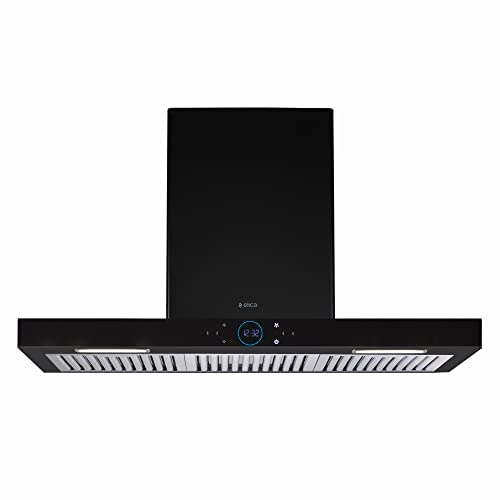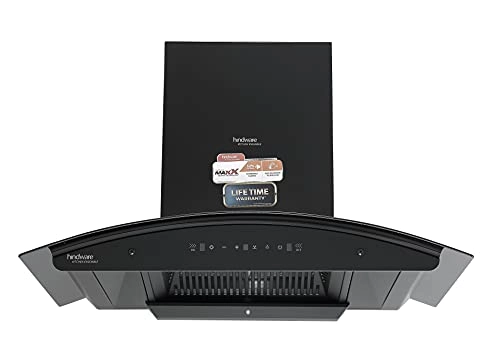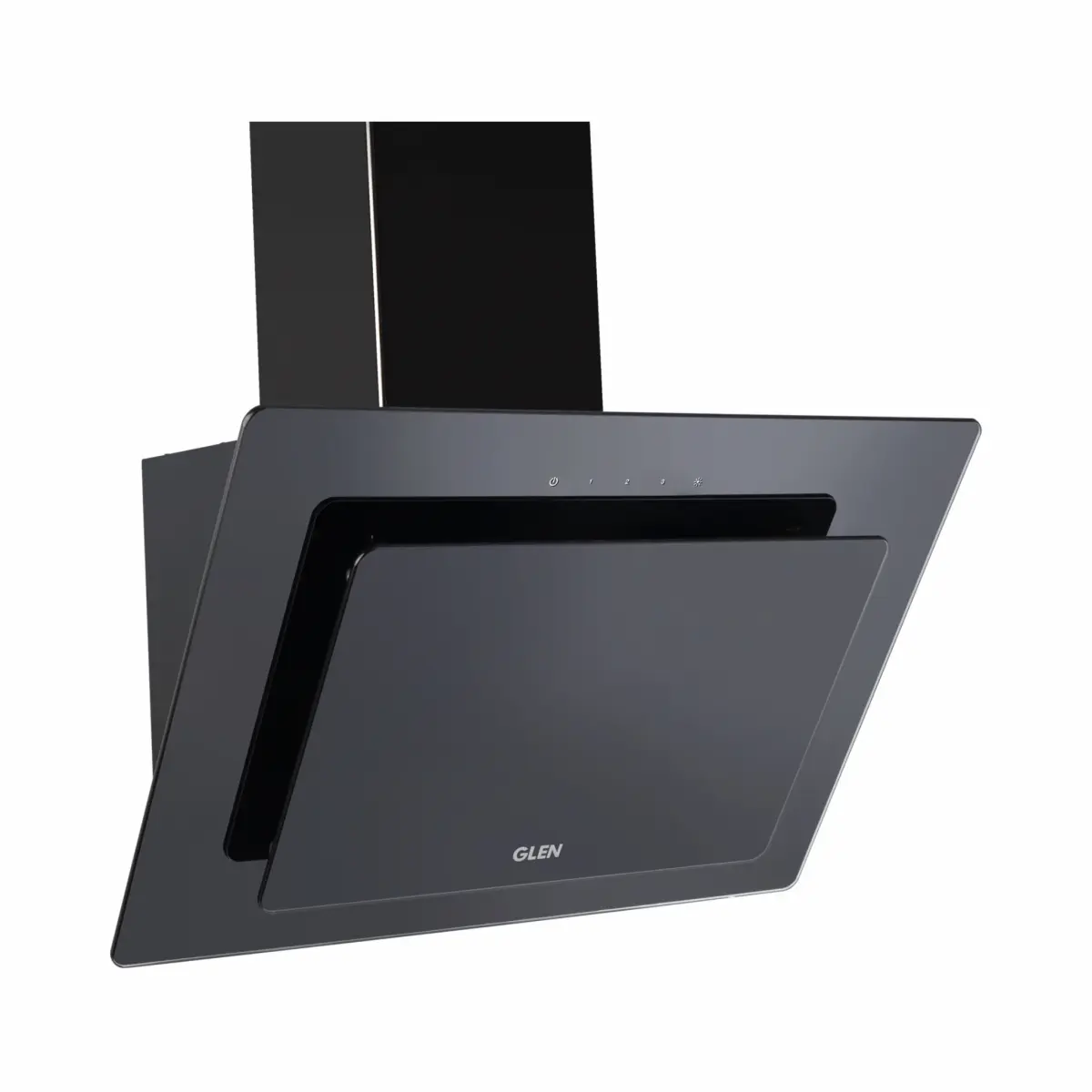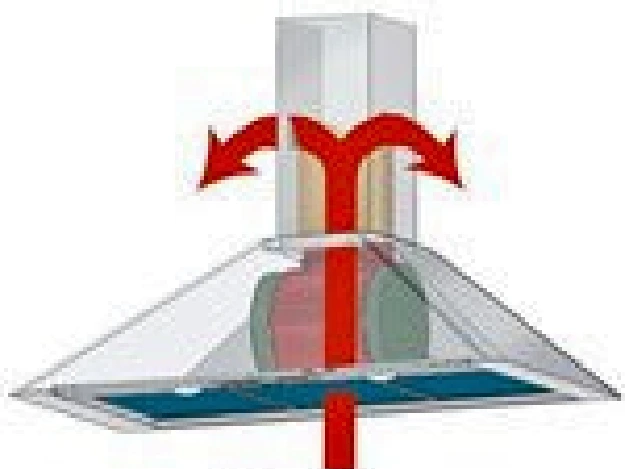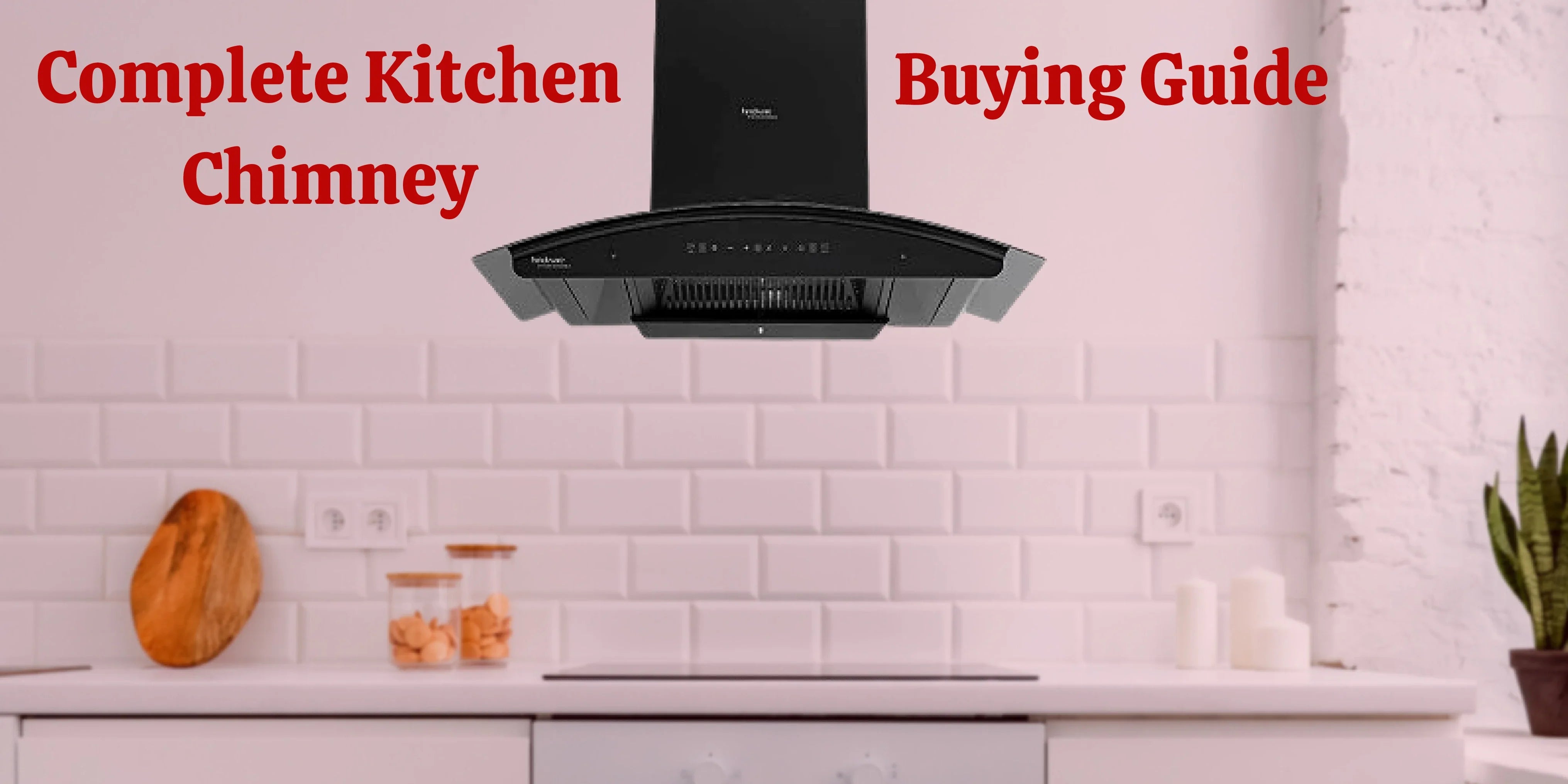
Everything you need to know before buying Kitchen Chimney
A kitchen chimney is necessary when you live in your home and preparing meals that require more effort than popping a loaf of bread in the toaster. Indian cooking produces a lot of smoke due to the excessive use of spices and oil. If there is no proper exhaust system, heavy fumes will accumulate black, thick, and oily stains on the kitchen cabinets and tiles. It is where kitchen chimneys come to the rescue. Hence, Every Indian kitchen, modular or not, needs a kitchen chimney.
If you are yet to Decide, what chimney do you need (want), it is advised to keep a pen and paper handy to note down your choice from each section, subsection or specification. With so many possibilities, purchasing a Kitchen Chimney can be extremely perplexing. However, if you get the incorrect one, you may regret it for the rest of the chimney's life. Kitchen chimneys are not ideal for all kitchens; before purchasing one, you should read our other post on whether or not a kitchen chimney is useful. Now that you know whether or not you need a chimney, let's look at some important factors.
Whenever you buy a kitchen chimney, it should fit in your kitchen and have good suction power. The type of chimney filter you buy should suit your cooking habits. We are providing some tips that you should consider buying a kitchen chimney.
Type of Chimney Filters
Cassette filter:
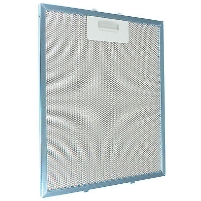 These are also called mesh filters. The filters are made of aluminium mesh or stainless steel. Multiple layers of filters protect the tiny pores in them that allow smoke to flow through and dust particles to collect. Moreover, various materials, such as oil and grease, corrode the aluminium mesh threads. It is essential to ensure that you clean the cassette filter for optimum use.
These are also called mesh filters. The filters are made of aluminium mesh or stainless steel. Multiple layers of filters protect the tiny pores in them that allow smoke to flow through and dust particles to collect. Moreover, various materials, such as oil and grease, corrode the aluminium mesh threads. It is essential to ensure that you clean the cassette filter for optimum use.
Baffle filter (best for Indian food): 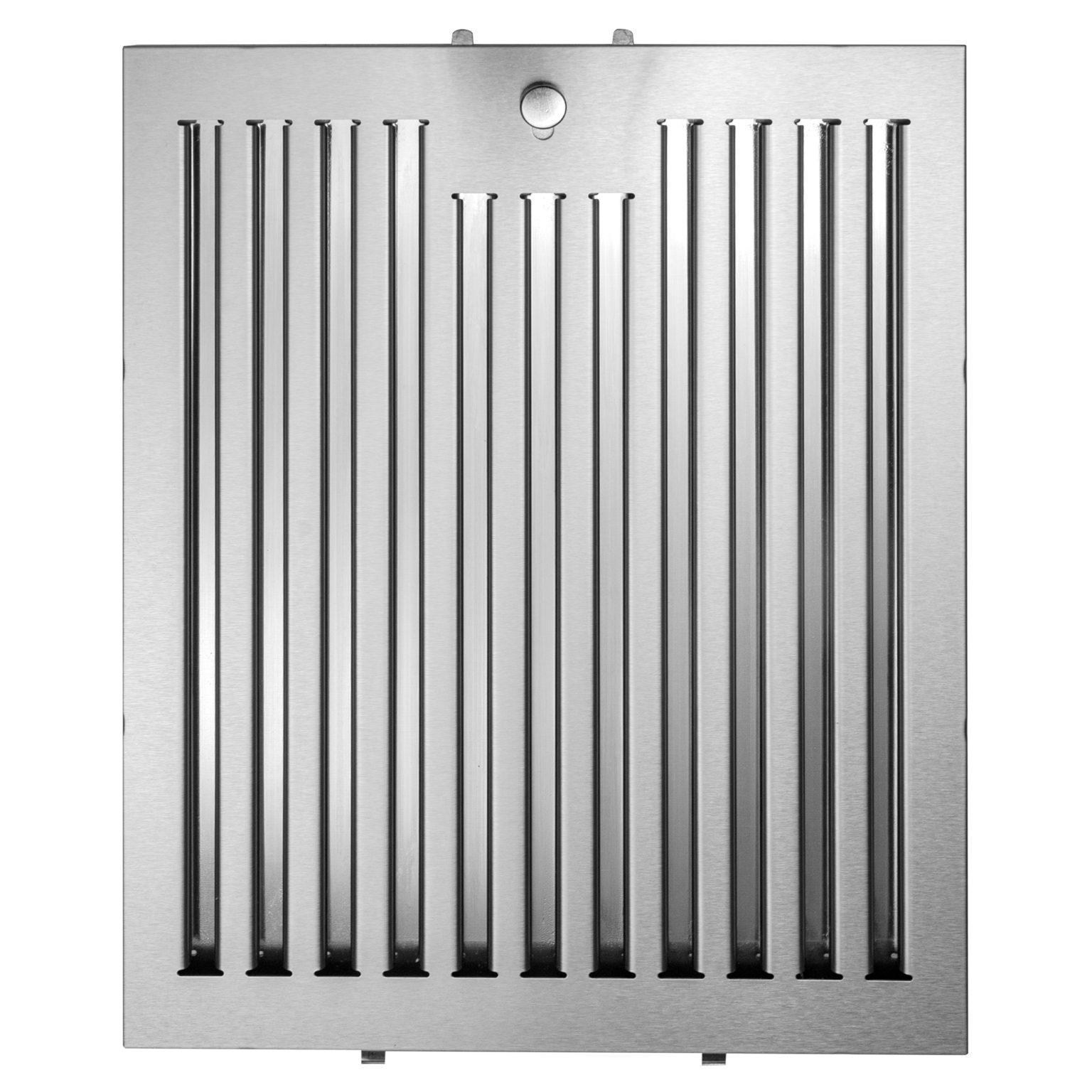 A baffle is a type of flow control panel present in a kitchen chimney. This filter is made of multiple curved panels of stainless steel. When the wind passes through this curve, the direction of smoke air changes. While this happens, particles such as oil and grease are sucked into the baffle filters. However, these filters require less maintenance, and you only need to wash them once every 2 or 3 months.
A baffle is a type of flow control panel present in a kitchen chimney. This filter is made of multiple curved panels of stainless steel. When the wind passes through this curve, the direction of smoke air changes. While this happens, particles such as oil and grease are sucked into the baffle filters. However, these filters require less maintenance, and you only need to wash them once every 2 or 3 months.
The nicest thing about baffle filters is that even if they are clogged with oil and other impurities, the chimney's suction power is unaffected. Baffle filters are durable and produce less noise during operations than other filter types. Though they are a bit expensive compared to others, these filters make the best kitchen chimney for Indian kitchens.
Carbon filter:
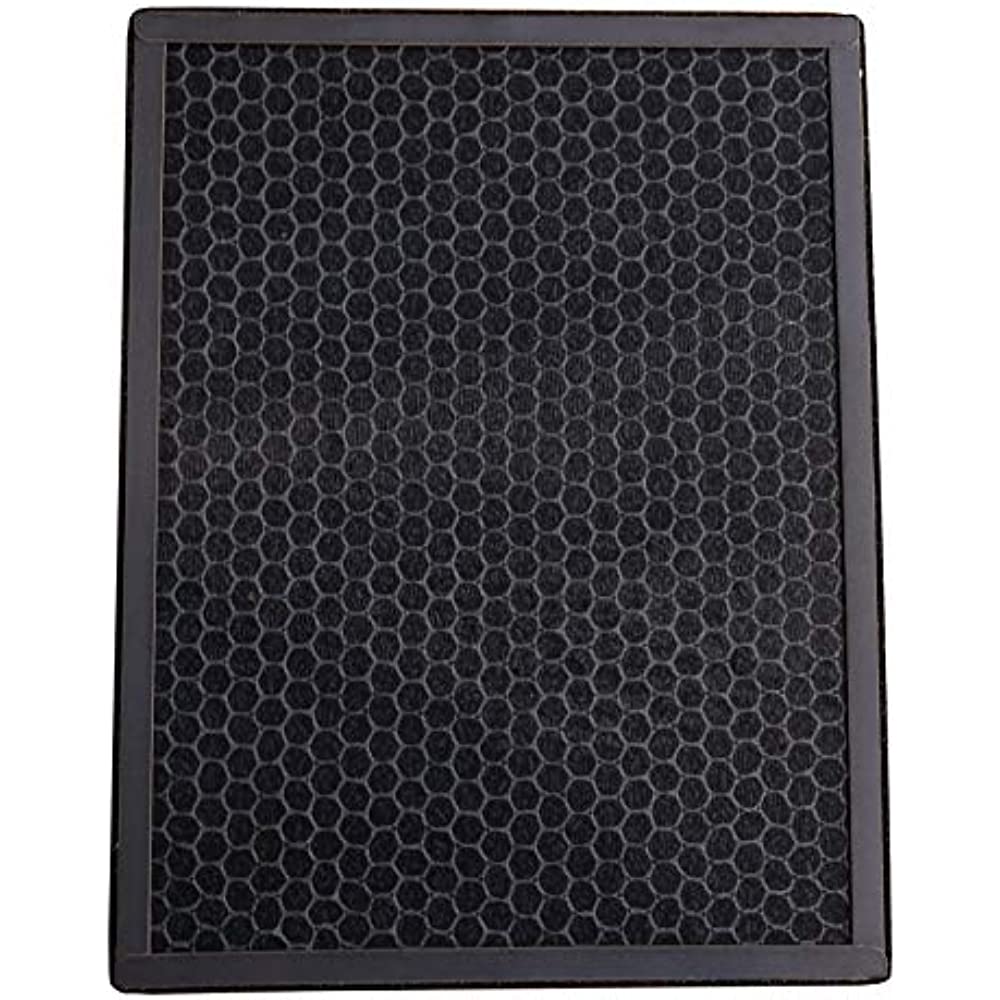 Also known as charcoal filters, they are made of charcoal plates with holes. In ductless chimneys , a carbon filter is employed. The air travels through a grease filter, which catches grease particles, and then a charcoal filter. These holes absorb smoke. Charcoal filters are perfect for Indian cooking, but the disadvantage is that these filters cannot be washed. Hence, you have to change them every five to six months, making them quite expensive. These carbon filters make more noise compared to others.
Also known as charcoal filters, they are made of charcoal plates with holes. In ductless chimneys , a carbon filter is employed. The air travels through a grease filter, which catches grease particles, and then a charcoal filter. These holes absorb smoke. Charcoal filters are perfect for Indian cooking, but the disadvantage is that these filters cannot be washed. Hence, you have to change them every five to six months, making them quite expensive. These carbon filters make more noise compared to others.
FILTERLESS Chimney:
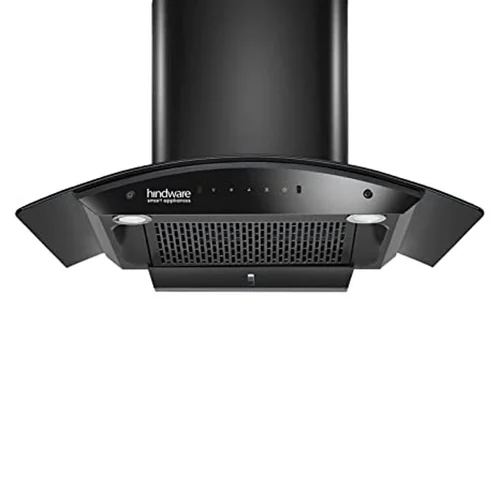 As much as chimneys with baffle filters are popular, filterless chimneys are in equal demand in last 2 - 3 years. As the name suggests, none of above given filter is used in this chimney and still it works effectively, here is detailed explanation about Filterless Chimney
As much as chimneys with baffle filters are popular, filterless chimneys are in equal demand in last 2 - 3 years. As the name suggests, none of above given filter is used in this chimney and still it works effectively, here is detailed explanation about Filterless Chimney
The video explains difference between chimney filter types: -
Decide the size of a chimney:
Chimney comes in several sizes with overall width: 45 cm (1.5 ft), 60 cm (2 ft), 71,75,76 cm (2.5 ft), 90 cm (3 ft) and 120 cm(4ft), it is critical when traversing the chimney aisle to ensure that you acquire a chimney that properly performs its function. So, how can you find out what size chimney is best for your kitchen?
To guarantee that the chimney is removing all of the stink and smoke, make sure it is the right size. In general, the size of your chimney should be larger than the size of your cooktop. If your cooktop is 60 cm broad, for example, your chimney should be at least 60 cm wide. In this manner, it can readily catch all of the stench, gas, and grease without having to be too big. On the other hand, it shouldn't be so large that it clashes with your kitchen's design and causes you to overspend. As a result, the size of your chimney is critical, and you cannot underestimate it. Faber has a specific Feature 3D suction or 6 ways suction for the scenarios in which smoke flows outside chimney width.
Different Types of Kitchen Chimneys
Wall-mounted Chimney:
 A Wall-mounted chimney is mounted against the wall above the hob. Designed for conventional kitchens where the store is located near the wall, it suits the Indian style of cooking. This is most popular mounting type and comes in several shapes & designs .
A Wall-mounted chimney is mounted against the wall above the hob. Designed for conventional kitchens where the store is located near the wall, it suits the Indian style of cooking. This is most popular mounting type and comes in several shapes & designs .
Island Chimney: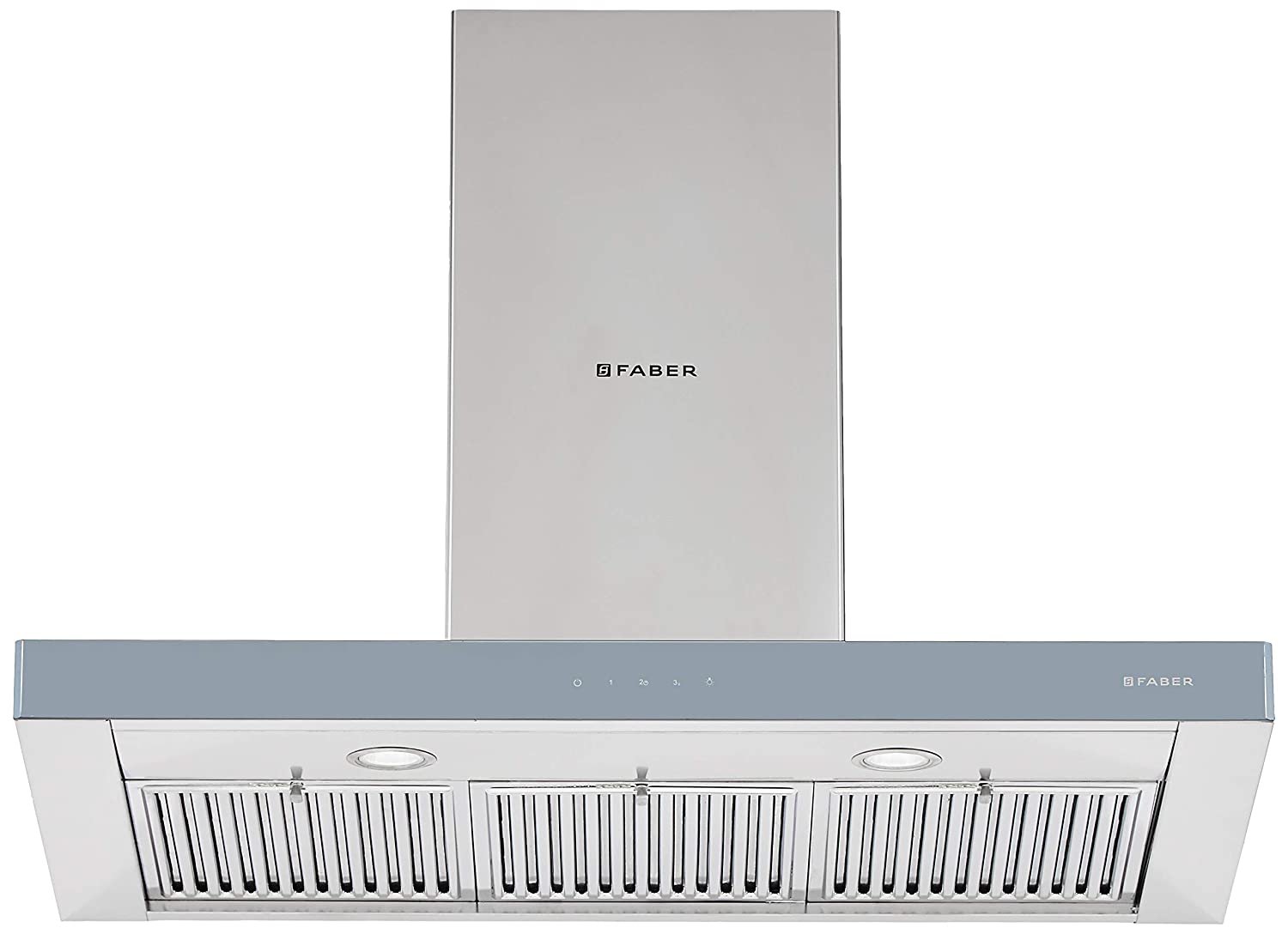 An Island chimney is primarily for a kitchen where the counters are not attached to the wall. The island chimney hangs from the faux ceiling above the cooking hob. The cooking platform is located in the centre of the kitchen. The most premium type of chimneys are generally this type and Kitchen Brand Store proudly has supplied to several celebrities and personalities. If you want to have a look, Faber skylift or Elica Interstell ar is among the most premium Island kitchen Hoods in India.
An Island chimney is primarily for a kitchen where the counters are not attached to the wall. The island chimney hangs from the faux ceiling above the cooking hob. The cooking platform is located in the centre of the kitchen. The most premium type of chimneys are generally this type and Kitchen Brand Store proudly has supplied to several celebrities and personalities. If you want to have a look, Faber skylift or Elica Interstell ar is among the most premium Island kitchen Hoods in India.
Built-in chimneys (Integrated):
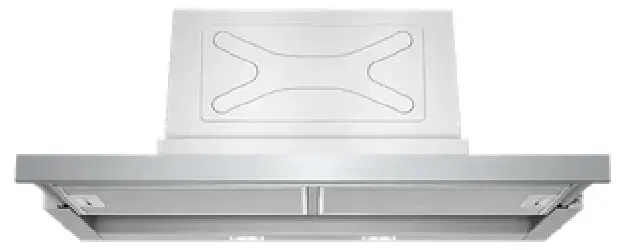
They are costly compared to other chimneys and are fitted inside wooden furniture that can be put up against the wall. Downdraft Chimney are also one type of Built in chimney.
Corner chimney (Rare in India):  Corner chimneys are the type of chimneys placed in the corner of the kitchen when the cooking hob is located against the wall.
Corner chimneys are the type of chimneys placed in the corner of the kitchen when the cooking hob is located against the wall.
Shapes and Designs:
Straight Line Chimney:
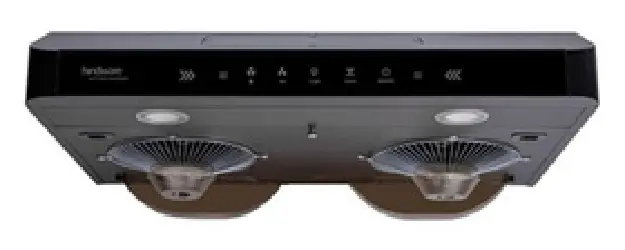 This is how the Kitchen chimneys were made at first (Conventional model). These are Linear (Bar Shape) and mostly Multiple motors are installed. Cassette filters used to be more popular with these chimneys. Though users tend to adopt to other form and shape of chimneys lately, these are still popular for old style kitchens with concrete slabs, and it is also very useful to be installed where there is less space available on top of the cooktop for any reason (it can be a window, slab or already done woodwork or some other plumbing provision which you would not like to disturb).
This is how the Kitchen chimneys were made at first (Conventional model). These are Linear (Bar Shape) and mostly Multiple motors are installed. Cassette filters used to be more popular with these chimneys. Though users tend to adopt to other form and shape of chimneys lately, these are still popular for old style kitchens with concrete slabs, and it is also very useful to be installed where there is less space available on top of the cooktop for any reason (it can be a window, slab or already done woodwork or some other plumbing provision which you would not like to disturb).
These are also considered to be most economical options for installing a chimney, the most economical comes with Cassette filter and push button options with suction power starting as low as 450 m3/hr. However, all is not lost on Straight line chimneys, while majority of Manufacturers doesn't focus or even doesn't product any Straight-Line chimneys, The most prominent and popular Indian Chimney Brands have given handful of options which you cannot take out of your consideration and these models give other shaped chimney run for money. See All Straight-Line Chimney options here :
Here is a video of Hindware Straight line chimneys with several features into one:
You can buy a kitchen chimney based on your favourite design choices. Specifically, there are two types of chimneys designs available.
● Convectional kitchen chimneys are made for absolute practical use, which you can find in most kitchens. This kitchen chimney is quite affordable and made of stainless steel. These fireplaces mostly focus on performance rather than style.
● Contemporary kitchen chimneys are the designer's first preference and are mostly used in modular kitchens for aesthetics, style, and status symbol.
In our chimney Category, you can filter by shape of chimney ,
|
|
|
|
|
See All T Shape (Sleek Design) Chimneys |
Chimneys with Pyramid shape/ Curve Glass Design |
See All slant / Inclined Hood chimneys. |
Ducted and ductless
Chimneys are the two most common types of kitchen chimneys. Both of these styles of chimneys are available in wall-mounted, built-in, and island configurations.
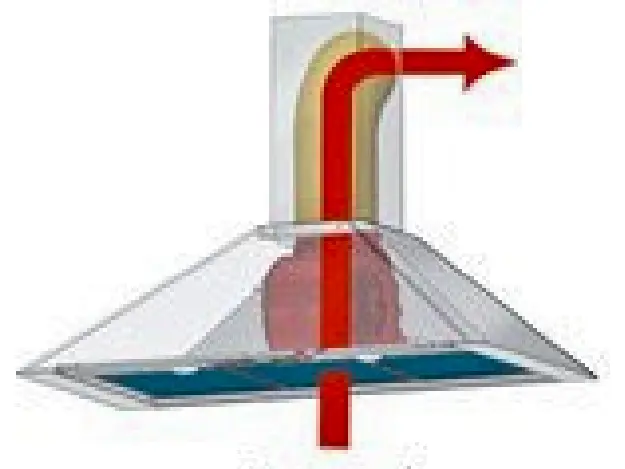 A ducted chimney draws in unclean air, captures oil and spice particles in its filters, and exhausts smoke, fumes, and aromas from the kitchen through a PVC pipe. It is more expensive, but it is more effective in cleaning the air.
A ducted chimney draws in unclean air, captures oil and spice particles in its filters, and exhausts smoke, fumes, and aromas from the kitchen through a PVC pipe. It is more expensive, but it is more effective in cleaning the air.
A recycling (ductless) chimneysucks dirty air in, absorbs the pollutants in carbon/ charcoal filter installed and returns clean, odor-free air to the kitchen. It is less efficient because it returns the same air to the kitchen and does not remove heat or moisture.
The motor, exhaust fan, and pollutants-catching filters are the most critical components in both types. The air suction capacity of the chimney determines its effectiveness. It's measured in cubic meters per hour or m3/hr in the industry. Although the increased suction capacity performs better, the engine is noisier, and the system is more expensive. There are optional extras like LED lights, sensors, and controllers, which you may select based on your needs and budget.
Chimney Suction Power
The rate at which smoke, Oduors, and oil particles are absorbed by the chimney is referred to as suction power. The motor's power determines the suction power. Hence, always choose a kitchen chimney with a high-efficiency motor.
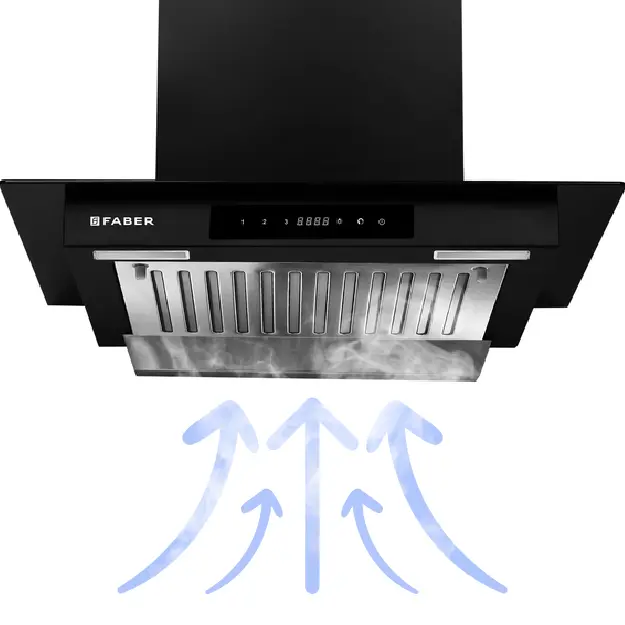
However, the suction power of the chimney should be based on how often you cook and your cooking style. Suction capacities vary from 400 cubic meters per hour to 1600 cubic meters per hour. If you prefer healthy food and use less oil in cooking, a capacity between 650 and 950 m3/hr should be sufficient. Moreover, if you cook deep-fried foods frequently, you should go for a chimney with a suction power of 1200 m3/hr and above.
If the ducting pipe length is greater than 15 ft and it has multiple bends, always go for high suction power with Baffle Filter.
Auto Clean Chimney:
 The kitchen chimney's auto cleaners can maintain their body parts and clean them frequently. Cool air will contain mostly oil particles. When the air released during your cooking passes through the chimney, it is observed that the oil present in the air stickers to the walls of the vessel. This detachable oil collector needs to be cleaned to ensure that it can work smoothly.
The kitchen chimney's auto cleaners can maintain their body parts and clean them frequently. Cool air will contain mostly oil particles. When the air released during your cooking passes through the chimney, it is observed that the oil present in the air stickers to the walls of the vessel. This detachable oil collector needs to be cleaned to ensure that it can work smoothly.
However, the auto-clean will help a lot in the cleaning of all particles present in the air sticking to the chimney, thus improving the suction power and lifetime. An auto-clean chimney is an excellent option for households troubled by cleaning the chimney several times. As you have already read about Filter less auto Cleaning Chimneys, Other filter type uses heat or water cleaning method, here is the detailed difference between Thermal Auto cleaning or Water Auto Cleaning of the Kitchen chimney.
Chimney Control Type:
Push button:
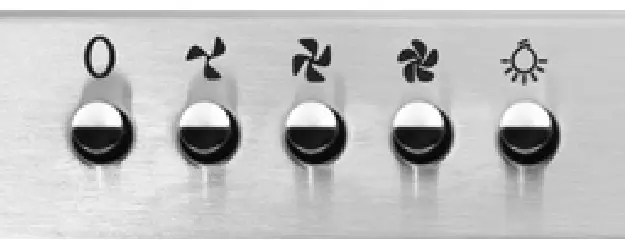 The most Economic Chimneys have this type of push button Mechanical Control. Generally, there are 4-5 buttons (1. Power On/OFF (Default Fan speed), 2. Fan Speed 2, 3. Fan Speed 3, 4. Lights On/ off). These types of control are considered to have a really long life and not as fault prone as electrical ones.
The most Economic Chimneys have this type of push button Mechanical Control. Generally, there are 4-5 buttons (1. Power On/OFF (Default Fan speed), 2. Fan Speed 2, 3. Fan Speed 3, 4. Lights On/ off). These types of control are considered to have a really long life and not as fault prone as electrical ones.
Touch Control:
 With all appliances and gadgets becoming touch control, this has become a must have feature in kitchen chimney as well. Nothing to worry, Brands are offering as much as 2 years warranty on the touch control panel and the spare parts are easily available too. You may always go with touch control with a slight addition to cost.
With all appliances and gadgets becoming touch control, this has become a must have feature in kitchen chimney as well. Nothing to worry, Brands are offering as much as 2 years warranty on the touch control panel and the spare parts are easily available too. You may always go with touch control with a slight addition to cost.
Motion Sensor/ Gesture Control:
 You do not want to touch the chimney panel with oil or flour-soaked hands, hence this feature of just waving your hands in front of chimney can power on/ power off, reduce or increase speed of the chimney. This is such a convenience and avoids hassle to clean the touch panel repeatedly.
You do not want to touch the chimney panel with oil or flour-soaked hands, hence this feature of just waving your hands in front of chimney can power on/ power off, reduce or increase speed of the chimney. This is such a convenience and avoids hassle to clean the touch panel repeatedly.
Chimney Motor Warranty
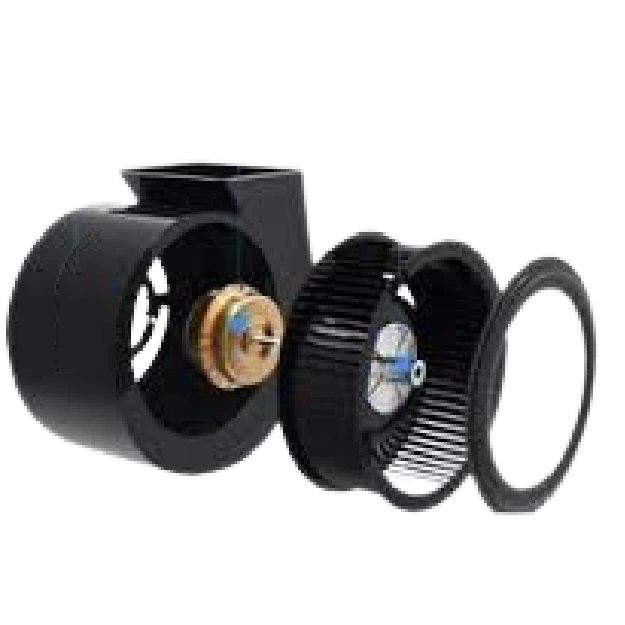 A kitchen chimney motor is a critical component of any kitchen chimney or exhaust system. It helps to expel smoke, fumes, and other airborne particles from your cooking area, keeping your kitchen clean and free of harmful contaminants. A high-quality kitchen chimney motor is designed to function consistently and reliably over an extended period of time. Many manufacturers offer warranties for their chimney motor products, typically ranging from one year to several years or more. These warranties cover defects in materials and workmanship, providing peace of mind and protection for your investment. It is important to carefully read and understand the terms of your warranty, as well as properly maintain and care for your kitchen chimney motor to ensure it remains functional for years to come.
A kitchen chimney motor is a critical component of any kitchen chimney or exhaust system. It helps to expel smoke, fumes, and other airborne particles from your cooking area, keeping your kitchen clean and free of harmful contaminants. A high-quality kitchen chimney motor is designed to function consistently and reliably over an extended period of time. Many manufacturers offer warranties for their chimney motor products, typically ranging from one year to several years or more. These warranties cover defects in materials and workmanship, providing peace of mind and protection for your investment. It is important to carefully read and understand the terms of your warranty, as well as properly maintain and care for your kitchen chimney motor to ensure it remains functional for years to come.
Almost everyone offers 5 years of warranty which is minimum however, others offer Lifetime warranty with definition of lifetime being 7 years or 10 years or 12 years or 15 years.
Other impactful Features:
Noise Level:
More the suction power and Fan speed, noisier the chimney is supposed to be. However, there are some models specifically designed to keep the noise level lower to 42 dB or 38 dB levels. for example: Elica includes "EDS" in their chimney model name when it is "Deep Silent", Hindware labels their silent chimney products with "MaxSilence" or Faber includes "Sil-K" in their chimney model name. We have tried to include it in our chimney Noise Level Filter, and you can use it very well if you are looking for a silent chimney.
Power Consumption:
Most chimneys work on 220-240V ~50Hz AC power supply and power consumption vary between 125W to 300W. It depends upon the motor built quality.
Smart Chimneys:
Few models come with smoke and smell sensors making them smart to start as soon as there is slightest of smoke. It also shuts down automatically when cooking is done and there is no smoke or smell.
3D or 6-way suction:
This is a patented and proprietary feature from Faber, by which the chimney sucks the smoke which is left out or passing besides the filters or main suction mouth.
IOT:
There are chimneys which can be controlled by proprietary brand mobile application. Additionally, some models are compatible to Alexa or Google assistant as well.
For example: Elica has launched latest models with 'iSmart" series, and these are IoT enabled. Hindware has launched 'i-pro' models and so on several brands have given their IoT models different names.
If you are looking to know about pipe size and length while installing chimney, here is a little video: -
BLDC MOTOR:
Eco friendly policies coming into impact, technology has played its role to conserve energy. Thus Brushless Direct current motor saves electricity consumption which is good on pocket as well as environment. A brushless DC motor (BLDC motor) is a type of electric motor that uses direct current (DC) power but doesn't have brushes like a conventional DC motor. Instead, it uses electronic controls to switch currents to the motor windings to create a rotating magnetic field. This magnetic field then interacts with the permanent magnets on the rotor, causing it to spin.
BLDC motors have several advantages over brushed DC motors:
- Higher efficiency: Without brushes that create friction, BLDC motors can convert more electrical energy into mechanical energy, making them more efficient.
- Longer lifespan: The lack of brushes means there's less wear and tear, so BLDC motors typically last longer than brushed DC motors.
- Lower maintenance: Because there are no brushes to wear out and replace, BLDC motors require less maintenance.
- Higher speed and torque: BLDC motors can achieve higher speeds and torques than brushed DC motors of similar size.
- Smoother operation: BLDC motors provide smoother operation due to the electronic control of the magnetic field.
Kitchen Chimney Price
The price range for kitchen chimneys starts from Rs. 5000 in India. However, kitchen chimney prices vary greatly depending on all the specifications discussed so far. 60 cm size auto clean chimney price range starts from Rs. 10,000 onwards. While the price of a 90cm chimney starts from Rs. 12,000 in India.
Some chimney manufacturers provide free installation feasibility. However, Mostly Brands charge installation charges of Rs. 500 for wall mounted and Rs. 1500 for Ceiling mounted Chimneys.
Warranty: Most famous kitchen chimney brands offer a warranty of at least one year comprehensive and 5 years on motor and rotor. However, some brands offer longer warranty periods like lifetime warranty which varies from 7 years to 12 years from date of purchase. Hence, buying a chimney with a long warranty is always good.
It is always recommended to let the brand technician only take care of opening the brand packed chimney box and get installed by authorized technician only for uninterrupted and hassle-free warranty service.
How to Clean Kitchen Chimney
Cleaning the kitchen chimney is not only time taking task but also quite tiring. While cleaning a baffle filter will be easier than cleaning a mesh filter as it requires less frequency of cleaning. You can also use dishwashing liquid and baking soda to clean the chimney filter.
All you have to do is take a tub of warm water and add this dishwashing liquid to the water and let the filter soak for an hour. Remove the filter, scrub it until it is clean, and stay in the sun for an hour.
Chimney versus Exhaust Fan, Which one is Better?
When it comes to the cooking environment, a chimney is much better than an exhaust fan. Although an exhaust fan eventually expels the smoke, it does so only after your kitchen has filled with odour and smoke.
Which one is better?
There is no doubt that a kitchen chimney is the best option as compared to an exhaust fan. Though a chimney is expensive, it reduces the effort of cleaning the kitchen and keeps the kitchen grease and smoke-free.
Kitchen Chimney FAQs
Now if you have noted down all your requirements on paper, you may share the photo of paper with us via WhatsApp on +918930313030 and our person can recommend you the right brand chimney for your budget. if you have other thoughts, you may share the same via whatsapp or leave in comment section below, we will incorporate the same. you may want to watch videos regarding several chimneys in this YouTube Playlist which keeps growing.
DO’S AND DON’T’S FOR KITCHEN CHIMNEYS:
DO’S:
- If you're installing a ducted chimney, position it in such a way that the piping that links to the exterior is short and has few or no bends. This improves the suction efficiency of the vacuum cleaner.
- Keep in mind that the bottom of your kitchen chimney should be 600 to 800 mm higher than the stove cooktop when installing it. A lower kitchen chimney height could be problematic for you when it comes to cooking.
- If your kitchen is undergoing renovations or construction, and your kitchen chimney was installed prior to that, remember to remove it from the kitchen wall. Include the chimney in the box as well. We say this because the construction process generates a lot of fumes, dust, and paint chips, all of which have the potential to harm the chimney. In most cases, such losses are not covered by insurance.
- Always read the instructions handbook that the brand provides to customers before you start using the chimney.
- Also, make sure that your home's power supply fulfills the chimney's standards.
- Always ensure that the accumulated residues and oil particles on the lower half of the kitchen chimney are cleaned. Because failing to clean it properly could result in a fire hazard in your kitchen.
- All technical work, such as repairs, must be performed exclusively by authorized personnel who are provided to clients by the brand makers
DON’T’S:
- Always keep an eye out for open flames once you begin the cooking procedure. We mean that under the kitchen chimney, the chef or user must avoid flame-based cooking or grilling. Otherwise, there is a chance that the chimney will be damaged.
- If you're preparing to cook something, make sure you don't leave the hot oil alone, as this could trigger a flare-up.
- As soon as the installation is finished, double-check to make sure that all of the parts on the hood, such as baffle filters and plastic films, as well as other parts, have been removed by you. Before turning on the kitchen chimney, remember to take them out.
- Remember to clean and wash the kitchen chimney filters on a at least bi-weekly basis to ensure a smooth operation.
- Do not smack the chimney hood even gently in case you find tiny smoke particles and you want to get rid of it, better do it with cloth.
-
Do not forget to disconnect the plug of your kitchen chimney from the kitchen's electric socket whenever you perform any type of kitchen
maintenance or remove the chimney filters. - Allowing tiny children to operate or play near the kitchen chimney is never a good idea.
- Allowing your pets to get too close to the kitchen chimney is also a bad idea. We are confident that you would never want anything to go wrong.
